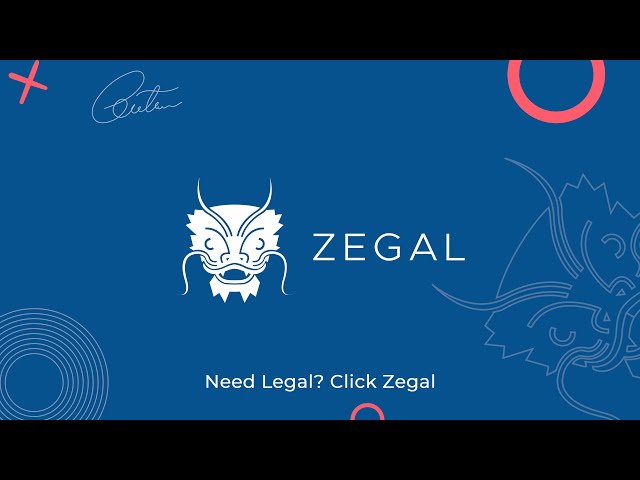How to generate a Trademark License Agreement
Trademark usage agreement
A Trademark License Agreement is a legal contract between the owner of a trademark (the licensor) and another party (the licensee) that grants the licensee the right to use the trademark under specified conditions. This type of agreement allows the licensee to utilize the trademark for certain purposes, such as selling products or services under the trademark, while the licensor retains ownership of the mark.
Trademark License Agreements are crucial for both parties as they help in expanding brand presence and generating revenue, all the while protecting the brand’s reputation and integrity.
Essentially, the licensor earns money by way of royalty. While the licensee gets to use the mark to gain more business. In addition, the licensor also benefits from the expanding reach and popularity of the mark. But, if left unchecked, licensing could also harm the reputation of the trademark and the licensor. Hence, it is of utmost importance to incorporate clauses with respect to quality checks of goods or services in the license agreement.
What is a Trademark License Agreement?
In essence, a Trademark License Agreement is used by a trademark owner to permit another party to use the trademark.
Traditionally, in a Trademark License Agreement, the licensee is permitted to use the trademark on its products or services. Essentially, in accordance with the trademark owner’s requirements and benefits from the trademark’s goodwill as a result. Often, it can also provide a lucrative income for trademark owners. Ordinarily, such income usually comes in the form of periodic payments known as royalties.
Typically, a Trademark License Agreement will set out how the trademark can be used and the duration and territory of the license. Also, the responsibilities of both parties.
What is a trademark?
In essence, a trademark is any symbol, word, or word legally registered or established by use as representing a company or product. For example, the “Coca-Cola” logo, and the “just do it” phrase of Nike. Trademark licensing is allowing a third party to use these logos or words in exchange for payments called “Royalties”. It is a part of brand licensing that allows the use of trademarks on certain products.
Why is quality control important in trademark licensing?
Importantly, your trademark carries a brand value and reputation for your business. Essentially, it is a statement as to the quality of your goods and/or services. If the licensee to whom the right to use the trademark is granted does not maintain the quality of his goods and/or services, then it can tarnish the hard-earned reputation of your business. Subsequently, this is why it is one of the most important parts of a trademark licensing agreement is that you conduct due diligence on the licensee. Further, standard quality control in the goods and services provided by the licensee is ensured by setting out in detail the quality and terms and conditions of use of the trademark.
Does it matter if my trademark is not registered?
You can enter into a trademark license agreement regardless of whether your trademark is registered. You can do so even if it’s unregistered or in process of registration. Essentially, what you need to ensure in the case of an unregistered trademark is that you provide every possible detail of your claim in the ownership. You can claim your ownership of the trademark with details like:
- Trademark description
- Date of first use
- Description of goods/services used with your trademarks
- However, a registered trademark is the best way to claim your ownership of the mark.
What should you include in a Trademark License Agreement?
Details of parties involved: Clearly identify the involved parties with details of the licensor and licensee. There are generally two parties in a Trademark License Agreement, a licensor, and a licensee. But in cases where sublicenses are allowed, the licensee can be the licensor as well. Further, licensees could be a person or legal persons meaning a business holding a license.
Details of the power of the trademark to be licensed: it has to be clear whether the trademark is a registered or an unregistered one, or if a trademark application is in progress. Further, what power does the assigned agreement grant with regard to the trademark? It could be for sales and distribution or simply just production,
Exclusivity: Not all Trademark License Agreements grant the same level of rights. Depending upon what the licensee intents to use the trademark for, they should be clear about what kind of right they want the agreement to provide them with.
Assignment of trademark: Your agreement should mention that without prior consent from Licensor, there can be no assignment of the trademark in any way.
Scope of approved use: Define the contract term for use of the trademark along with the territory in which the licensee can use the trademark. The sectors and usage of the trademark need to be clarified and mentioned as well. Having a well-defined scope affects other clauses of the agreement too. These include clauses related to the royalties and compensation, non-competition clauses, rights granted for early termination, warranties or representations, indemnifications, and others.
Quality control to be maintained by the licensee: This provision defines the conditions relating to the use and protection of the trademark. The trademark is an identity and representation of the licensor. Details pertaining to how the quality of the trademark license will be maintained is crucial for the trademark to hold its value in the long run. The licensor of the trademark must set standards to ensure that the goodwill attached to the trademark is maintained. A requirement for this can be granted the ability to audit the licensee with regard to the use of the trademark.
Compensations: The royalty that will be paid in exchange for the usage of the trademark is called compensation. This can be a percentage of the profit earned from the usage of the trademark or whatever is agreed upon by the involved parties.
Disputes and Termination: These clauses specify the rights and liabilities of the parties involved in the agreement. If and when an issue arises where a party defaults on their obligations, this provision can help resolve the issue without it escalating further. It grants the party that breaches the contract the right to terminate it.
Types of rights a Trademark License Agreement grants
A Trademark License Agreement generally grants 3 types of rights.
- Exclusive rights: This grants the licensee exclusive rights to use the trademark during the licensing period; meaning no one else can be granted permission to use the same trademark during the set time including the licensor. Further, this can be limited to certain geographical regions or a particular area.
- Non-exclusive rights: This allows multiple parties to use the Trademark at the same time. Here, even the licensor, can use their own trademark as well.
- Sole rights: Here the right to use the trademark will be granted to just one licensee however, unlike exclusive rights here, the licensor also has rights to use the trademark, but they cannot assign it to anyone else.
How do I license a product in the UK?
To license a product in the UK, one needs to apply for a license of right endorsement. Following this, the application will take at least 28 working days to reach the IPO. For those who would like to license any existing Intellectual Property, the licensor will have to be contacted directly.
Transfer of trademark in Hong Kong?
A registered trademark can be transferred from one person to another in Hongkong as per sections 27(2) and 31(1) of the Trade Marks Ordinance (Cap 559) (“TMO”)). The assignment can be completed by entering into a Trademark assignment agreement. This must be in writing and signed by the assignor.
Who owns an unregistered trademark?
An unregistered trademark is quite the same as a registered one but it does not receive the same protections as a registered mark and is only enforceable in a certain geographic area. It is owned by the business owner but unregistered marks are not offered the presumption of validity and ownership and so infringement actions are more difficult for unregistered owners.
Trademark License Agreement Template
A trademark licensing agreement is an effective document for a trademark owner to expand his commercial name in the market. What you should be aware of is that the brand value associated with your trademark should not decline because of the activities of your licensee. Maintaining a check on that is something that must be planned and drafted carefully in the terms and conditions of your trademark licensing agreement.
Stay compliant with the Zegal template library
Zegal legal template are meticulously crafted with the precision of AI and the expertise of seasoned human lawyers, providing a unique blend of speed and reliability.
You can trust that Zegal agreements are legally sound and fully compliant with current regulations.
Whether you're a startup, SME, or a larger enterprise, Zegal contract management will automate and speed up your legal processes.
Using Zegal will reduce risk, save money, and improve efficiency. Let us take care of the paperwork so you can focus on running your business.
Don’t compromise on speed or compliance. Stay secure, compliant, and efficient with Zegal.






